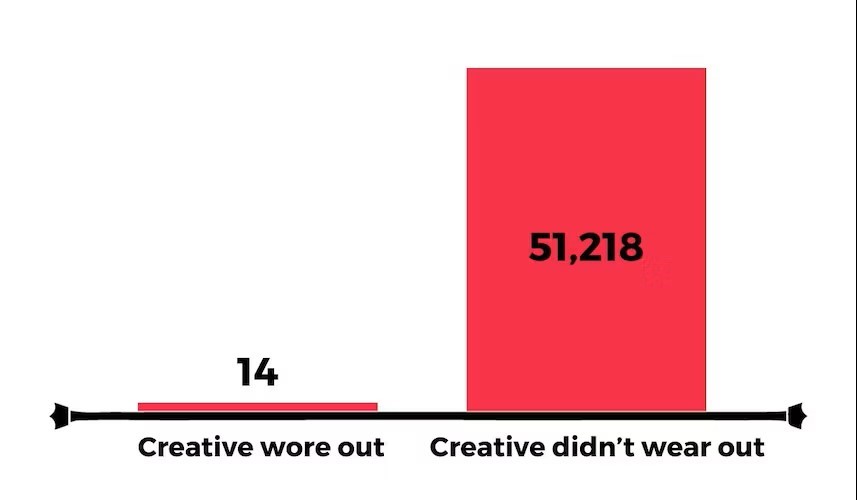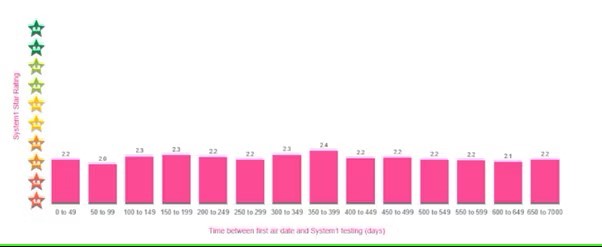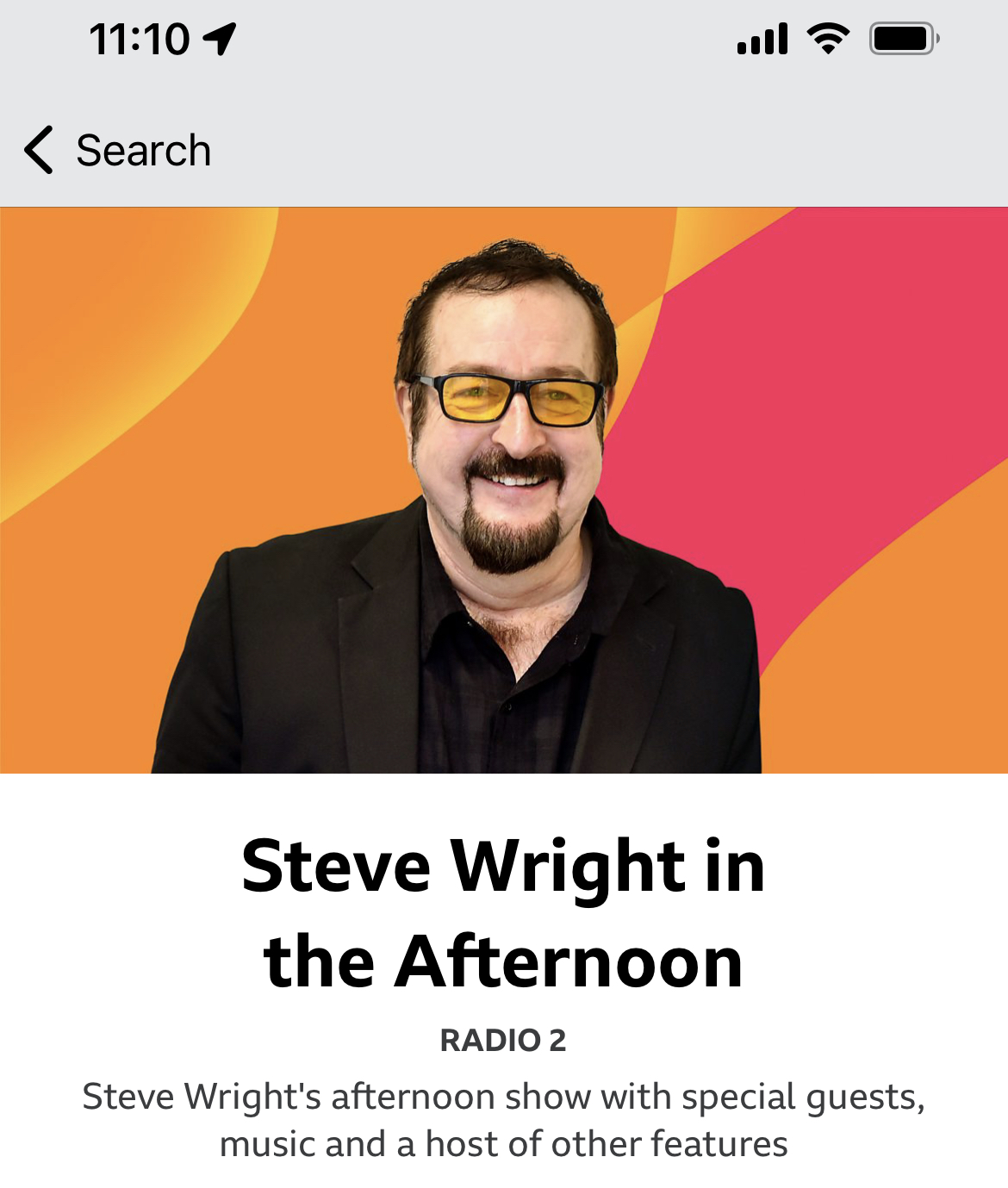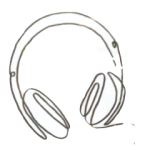The Radio Space

#THERADIOSPACE
WELCOME…To THE RADIO SPACE! Calling all Radio enthusiasts! HAVE YOUR SAY! Create / suggest an article, post, video, audio…about Radio and I’ll feature here. It can be current or a tribute to Radio Legends of the past. It’s up to you! Everything posted will be credited. Send to info@onaircoach.net
HAVE YOUR SAY
#RADIOARTICLES
Let’s be honest RADIO is a medium that was traditionally heard but not seen. The creativity was in story craft and radio imaging (the acoustic identity of the station, jingles, sweepers, liners, beds etc.) But as convergence hits radio the need to look good as well as sound good is something radio either does well or avoids like a plague.
Some stations like Dublin Digital Radio really get the image of radio well. Too well for some radio traditionalists. They have artwork per show done with such detail it could well be album art, and sometimes the art is per episode of show with new funky art expressing the vibe of the show. Think about it, if your favourite band’s latest LP was a white label in a black cover (think New Order Blue Monday with no colour) well you wouldn’t be impressed would you?
So why do it? Radio is converging. You generally do not get radio from a traditional radio set anymore (note: 1). I know this will piss off radio purists who tell me radio comes from a transmitter and is heard on a receiver and that is the only radio that is radio. Wrong. Radio is a word. Like Cinema Films Movies Flix Cineplex are all words for big screen entertainment. Radio is one word for Transmission, Mode, Apparatus (TX & RX), Content, Industry & Style. It is not confined to broadcast radio, radio style that is presented like a broadcast but delivered online live or on demand, that’s radio too. This radio has options for art work, as does DAB+ on modern radio sets. Websites and Social Media (not seen before 1992 and 2002) are ideal places to promote radio with pictures.
As the loss of artwork hurt music as we moved from LP to CD so too does lack of images to support radio, diminish the impact radio can have in a converged media world. Online radio is a URL. Each URL used is a vote for that link in a world with billions of links. Why does this matter? in the past your radio on the dial was in a city was competing with 20 or so other stations that were allowed to be on the dial through licencing, congestion or distance (geography). Nowadays the competition locally is only limited by those that want to compete with you and 40,000 other radio stations online around the globe. You need to look good while sounding good. And its not just once off, outsourced artwork, its the everyday ability to look good.
As radio content gets valued for its low cost of production, friendly presentation and loyal following is making its way onto TV screens. BBC Two Television on the UK 9am – 12pm is a relay of BBC News most of the year, TV is expensive and news is plentiful. RTE Radio 1 is on the RTE News Channel multiple times per day, radio on TV is effective and cheap. So expect radio studios to scrub up as they get seen more on HD TV screens.
While some radio will always be better suited to being “theatre of the mind” and heard but not seen, media budgets will dictate that quality radio content must get an outing on TV and Social Media. Some radio stations are merging into TV productions like France Inter or Sud Radio both in France (the later allowing 12 hours of roll back radio).
And its not just Radio on the TV that is happening, News Channels that were TV are doubling as radio and vice versa. Think GB News and Talk TV in the UK.
If you are looking to improve your radio project take a look at your album art and your visual opportunities (I am thinking BBC Radio 1 Live Lounge). There will be more ways to express your brand, image, identity, attitude, logos and your supporters images too.
Finally allow convergence in. Being a purists has its advantages – but if you remain true to ideals long discarded by the audience you might have an Ivory Tower to transmit from but nobody with a radio set to hear you.
Aspiring broadcast media and journalism students aiming to step into the dynamic world of radio must equip themselves with more than just textbook knowledge.
In an industry constantly evolving with technological advancements and shifting audience preferences, practical skills and industry insights are paramount.
Here are five essential steps to help students become industry-ready:
Understand the Radio Industry: Beyond your coursework, you should delve into understanding the intricate workings of the radio industry. Familiarise yourself with the media groups that own various radio stations, current industry trends (what IS DAB+?) and anticipate future developments. Recognising the landscape will provide invaluable context and foresight for navigating the industry.
Network Strategically: Building a robust network is crucial for aspiring radio professionals. Connect with individuals already established in the field who can offer guidance and feedback on your demos and content. Rather than directly asking for job opportunities, seek advice and constructive criticism. Genuine enthusiasm and a willingness to learn often pave the way for future opportunities such as work experience and shadowing.
Create Diverse Content: Radio isn’t limited to ‘traditional’ broadcasts. Explore diverse content creation avenues, including social media, video, and podcasting, to develop your storytelling ability. Experimenting with different mediums not only broadens your skillset but also amplifies your visibility within the industry.
Prioritise Practice: Practice remains the cornerstone of success in radio. Many students I’ve met and worked with express a desire to pursue radio but fall short in actively engaging with the medium. Whether through student stations, community or online radio opportunities, immerse yourself in practical experiences. Volunteer, intern, or contribute to these often assessable stations to hone your technical skills.
Listen Actively to Radio: Effective radio presenters and broadcasters are avid listeners themselves. Dedicate time to actively listen to a variety of radio shows and stations, analyzing different styles, formats, and audience interactions. Identify elements you admire and those you’d like to incorporate into your own approach. Pay attention to features, link structures, and audience engagement strategies, drawing inspiration from both music and speech led shows.
Succeeding in the radio industry demands a combination of industry awareness, practical experience, and a proactive approach to networking and skill development. It’s not easy, and is often described as a marathon. Be enthusiastic. Never be arrogant. Be a sponge with help and guidance.
For quite a while now, listening to both the best and largest broadcast radio stations across the country has left me asking the same questions, over and over again: ‘where is the program manager, is he/she listening to this? How is this even allowed on air? Is anyone guiding this presenter / personality?’ Whilst the radio landscape is evolving, and with it, the roles of those responsible for its success. While the hustle for revenue remains crucial, prioritising sales over core programming functions can lead to a disconnect between the station’s identity and its audience. This article dives into the critical roles of Programming Managers, Content Managers, and Talent Managers, highlighting where their time and focus should lie.
Beyond the Feature List: Programming for Listeners, not Ad Agencies
It’s tempting to view Programming Managers as glorified salespeople, pitching feature lists, TSL Builders, competitions, concerts, to ad agencies and clients. Whilst this aspect of a Programming Manager’s job is critcial, their time away from talent must be managed effectively. Their true value lies in understanding their audience and crafting compelling content that resonates. This means:
- Airchecking and Snooping with Purpose: Going beyond simply monitoring technical aspects, they should analyse content for listener engagement, format adherence, and opportunities for improvement. Irrespective how experienced the on air talent or team maybe, their is always room for improvement as most of us at one time or the other experience scotomas. Scotomasare blind spots—areas you can’t see.
- High Performance Drive Teams: Even with High performance on air teams which are wining awards annually or maybe considered the biggest show in the country, if they have sufficentkly high EQ, and their values are aligned to the station mission and vision, they will never fail to see that there is always room for improvement. They learn from each other and their mistakes, and don’t see their skills as a fixed set. They see every challenge as an opportunity to develop new skills. Also, talent working in such teams with a growth mindset are also open to feedback and criticisms if it can improve them professionally. They openly accept when others like the Program Manager, Station Manager, Sales Manager, Promotions Manager, Cleaner, or night time jock share their knowledge, wisdom and learnings without any ill-will.
- Music Rotations that Thrill, not Fill: Curating playlists that complement the station’s brand and audience preferences, not just ticking off music license boxes.
- Guiding and Coaching Talent: Investing time in developing on-air personalities who connect with listeners, fostering a unique and engaging sound.
Program Managers /Content Managers: Weaving the Narrative, not Just Pushing Promotions
Program or Content Managers play a vital role in shaping the station’s overall narrative. Their focus should be on:
- Crafting Compelling Content: Creating diverse and engaging content across various platforms, including podcasts, social media, and live streaming, not just relying on on-air programming.
- Data-Driven Decisions: Utilizing data insights to understand listener preferences and tailor content accordingly, ensuring relevance and effectiveness.
- Collaboration and Innovation: Partnering with other departments, like marketing and digital, to create seamless and impactful campaigns that resonate with the target audience.
Program / Content /Talent Managers: Nurturing Stars, not Just Filling Airtime
Talent Managers are the backbone of any radio station, responsible for:
- Attracting and Retaining Top Talent: Building strong relationships with on-air personalities, understanding their needs and aspirations, and fostering a positive work environment.
- Coaching and Development: Providing ongoing feedback, training opportunities, and support to help talent hone their skills and grow within the station.
- Building Community: Fostering a sense of camaraderie among on-air personalities, encouraging collaboration and teamwork that translates into a more engaging listening experience.
The Station Manager/ MD / CEO: Orchestrating the Symphony, not Just Conducting Sales
The Station Manager / MD/ CEO plays the crucial role of:
- Setting the Vision and Direction: Establishing a clear vision for the station’s brand, target audience, and content strategy, ensuring alignment across departments.
- Leading and Motivating the Team: Empowering Programming, Content, and Talent Managers to excel in their roles, fostering a culture of creativity, collaboration, and accountability.
- Championing the Listener: Keeping the audience at the heart of every decision, ensuring content remains relevant, engaging, and delivers on the station’s promise.
“Anyone who stops learning is old, whether at twenty or eighty. Anyone who keeps learning stays young. The greatest thing in life is to keep your mind young.”—Henry Ford.
Time for a Shift in Focus:
It’s time for radio stations to recognise that their core strength lies in captivating content and engaging personalities, not just selling features. By empowering Programming, Content, and Talent Managers to focus on their core functions, stations can create a truly resonant experience for their listeners, ultimately attracting advertisers who want to be part of a thriving platform. Remember, the heart of radio lies in its ability to connect with audiences, and that connection starts with getting the basics right.
Let’s spark a conversation! Share your thoughts on how radio stations can refocus their efforts and prioritize content creation over feature list sales.
#contentfirst #radioprogramming #talentmanagement #contentmarketing #onairtalent #audienceengagement #radiobranding #stationmanagement #leadership #creativity #collaboration #listenersfirst #SouthAfricanRadio
Irish Daily Star/Irish Mirror News Editor Eoghan Murphy has been appointed Managing Editor of Shannonside Northern Sound news and will join in mid March.
Darragh O’Connor is joining Shannonside as a Journalist.
Rick O’Shea has started a new weekly column on books and reading in the Independent Review supplement in Saturday’s Irish Independent.
Former Irish Independent Journalist Nicola Anderson has joined the Communications Clinic.
PJ Browne has left Balls Media to join the Irish Examiner as a Digital Sports Journalist.
Cathal Minogue is presenting a new breakfast show on Saturday mornings from 7am – 10am on Red FM- ‘Saturday Breakfast with Cathal Minogue.’
There are four job opportunities to share this week:
- Red FM’s Neil Prendeville Show is looking for a Producer
- Bauer Media Audio Ireland is hiring a Researcher for Newstalk Breakfast
- Balls Media is on the lookout for a Branded Content Producer
- The Irish Mirror is recruiting a News Reporter
To receive these updates directly by email please contact me at piaras.kelly@edelman.com

Radio Listeners Don’t Get Tired Of Music, Only PDs And Music Directors Do
by Fred Jacobs ·

Well, if that blog headline doesn’t get music radio’s attention, nothing will.
And it’s not meant for just practitioners of commercial radio’s music stations. It applies 100% to Christian radio and public radio stations that play music, including jazz, classical, Triple A, Americana, and yes, your urban alternative stations that have been springing up during the last five years.
So, where do I get off making this claim and why do I think I’m right?
First and foremost, some qualifications. Today’s blog post was inspired by an article that appeared in Marketing Week earlier this month, written not by a music programmer, a record company executive, a music researcher, or even a musician.
The author is Mark Ritson who holds a PhD in Marketing and has taught at business schools, including MIT. And full disclosure, the title of his column was:
“Consumers don’t get tired of ads, only marketers do”
I can tell you it’s one of the best marketing articles I’ve read in some time, largely because I agree with almost all of it, and it has a certain logic that should resonate with both marketers and radio programmers.

Now, you can tell me – and some of you most certainly will – that you cannot compare the wear and tear of an advertising campaign with that of a current (or classic) song. But after reading Ritson’s theories, I’m not sure why you can’t, at least to a degree.
Why does this matter? Because CMOs often walk away from an inherently effective campaign because they’re tired of it and because “Look how long we’ve been running it” paradigms.
Radio music directors and PDs aren’t all that different. It’s been said – and I think rightfully so – that people who work for stations listen to their own stations much more than normal people do (or that is healthy).
In ad world, Ritson calls it “wear-in,” the degree to which a campaign or ad has stayed too long at the party. In radio it’s “burn-out.” Same thing.
The more pragmatic among us may say, “But what about all that ad/music research we do? ”
ad/music research we do? ”
Isn’t that the great leveler? Isn’t there some sanity in all those Scantron sheets? After all, measuring “wear-in/burn-out” ought to provide the best metric for facilitating good decision-making.
Except that both research regimens are flawed. In the former, ad research teams often use college tests as their guinea pigs. Ritson shoots holes in both methodology and the idea that campaigns tend to follow the same cycles of exposure, repetition, and wear and tear. And of course, campaigns (er…songs) are going to hold up or fry at different rates.
Exposure may be the most important variable. Back in the pre-Internet days when yours truly last programmed, the only places consumers could hear a song was on a radio station or two, MTV (if it was newish), and on their own turntables and CD players.
Today’s cross-platform exposure – especially streaming because it is on-demand rather than linear – is a literal game-changer. And yet, radio is testing for so-called fatigue essentially the same way we did when Bob Pittman was a long-haired PD.
“And are you tired of it?” is no way to measure a song’s continued contribution to your playlist any more than learning the CHR down the dial just added the song you “broke” and have been banging into a hit.
But let’s look at the research – at least the ad stuff. Ritson points to research by Analytic Partners’ 2022 ROI Genome report as the first data point that indicates most marketers (I’ll let you fill in the radio analogy) have no idea what they’re doing.
They measured wear-out among 50,000+ ads and they learned this;
Most aren’t suffering from wear-out.
In fact, only 14 of the 51,000+ ads tested turned out to be fried. The rest? Still lots of tread on the tires.

And yet, most marketers are inclined to move on and create something new. Or in the words of the great philosopher Amplifi Media’s Steve Goldstein:
“It was working so well, we stopped doing it.”
In the radio world where audience research has become something of a rarity, there’s preciously even less data justifying dropping a song down to recurrent or putting it “on hold,” a limbo state where it will only enjoy millions of streams but won’t be heard on the radio.
As Ritson concludes, “The problem of wearout is one of the marketer, not the market.”
A little creative editing and we’re talking radio, songs, and bored programmers.
In another demonstration of research fallacies, Ritson turns to a study by System1 measuring the same ad and its ratings over time – when it first comes out and more than two years later:

That’s right – the scores are statistically the same over a relatively long period of time for a new ad campaign – or a new song.
Ritson ends his articles with several well-crafted “takeaways for marketers,” several of which don’t directly apply to the art of programming radio stations, picking and retaining songs.
But his first admonition – “Learn patience” – is spot on. Whether you’re a marketer or a designer handbag brand or you program a country station in Jacksonville, Florida, slowing things down and “learning the patience of the market” is key.
Ritson nods that we get too close to the product – in this case, the music. All that focus and passion can burn us out before the audience even remembers a song (or an ad) in the first place.
He also reminds “new marketers should resist new campaigns.” And to that, I wholeheartedly suggest stations whose position it is to play new music should still pump the brakes.
That’s not to say that if you’re a mainstream rock station and a new Foo Fighters lands on your credenza, you should sit on it and give it a think. But something new, bubbling under, unproven, streaming a good amount, and trying to break out deserves a degree of patience – especially to make sure you have enough rotational resources to adequately expose the playlist you submitted last week, much less a brand new song by an unknown artist.
Ritson also suggests “Looking backwards before you head forward.” Your gold library may hold more firepower than you think, especially these days when your audience will scarf down any comfort food you put in front of them.
 And finally, a piece of free advice from your friendly consultant (so you know what that’s worth): “You are not the center of the universe.”
And finally, a piece of free advice from your friendly consultant (so you know what that’s worth): “You are not the center of the universe.”
The only people who know you just added a song are you, your MD (maybe that’s also you), the label, and the trades. Listeners don’t treat your station like a “one stop shop” where they use you exclusively to hear what’s new and what’s next. In fact, you now may be one of the last stops on the new music express. All in all, another brick in the wall.
That’s OK. Know your place in the hierarchy, and program accordingly. You don’t have to first in order to win, but you have to be great without getting too far out in front of the field.
Jacobs Media has consistently walked the walk in the digital space, providing insights and guidance through its well-read national Techsurveys.
In 2008, jacapps was launched – a mobile apps company that has designed and built more than 1,300 apps for both the Apple and Android platforms. In 2013, the DASH Conference was created – a mashup of radio and automotive, designed to foster better understanding of the “connected car” and its impact.
Along with providing the creative and intellectual direction for the company, Fred consults many of Jacobs Media’s commercial and public radio clients, in addition to media brands looking to thrive in the rapidly changing tech environment.
Fred was inducted into the Radio Hall of Fame in 2018.
Subscribe to Jacobs Media’s AI EDGE Newsletter
Every week we demystify AI for broacasters in this free email!
Get Our Blog By Email
Receive our blogposts in your inbox every morning.
Don’t wait- be nice now.

The untimely death of Steve Wright has dominated the week in radio and media. When I saw the news, I was midway through delivering a workshop at University, and thankfully had a few moments to comprehend the news. Since then, up to the time of writing, my timeline has been pretty much full of comments about Steve and links to material from his vast repertoire.
If there is one thing which keeps coming back to my mind when looking down my social timeline its this…
SAY WHEN THEY CAN HEAR IT.
It’s a sad thing that Steve didn’t get to read all those lovely comments, the praise, the love and the warmth of people who knew him, or felt like they did from listening. I saw one post from someone, and I’m sorry I can’t remember who it was to give credit, which echoed this thought. Let’s not wait until someone has passed away, to shout about the good, the talent and the brilliant work.
Seeing and hearing the link from Chris Moyles about having dinner with Steve, and becoming his friend was for similar reasons. Let’s not wait until you can’t see someone!
When the news broke I reposted my link to a post from when Steve left the afternoon show on Radio 2 and my bizarre car journey with Steve when he was a consultant for GWR Group. I remember the impetus to write it being similar. It is what has prompted occasional “In Praise of...” posts from time to time– sometimes surprising individuals who were the subject of them, but designed to do just that- SAY IT WHEN THEY CAN HEAR IT.
The truth is that bad news travels faster than good, and social media can create a bit of a “pile-on” at times. I remember the feeling when Steve Wright left Radio 2 afternoons and Scott Mills took over, the vitriol was at times, vile. It was completely unnecessary and at odds with the praise when Scott left Radio 1 afternoons- different audiences I know but contradictory nevertheless. It was the rationale for my post in July of 2022.
So let’s try and do something, and the quote Steve from an interview that has been circulating this week, “My job is to be the nice guy”. Throw less shade and more praise. Lob fewer hand grenades and more love notes. I’ll write a few more “In Praise of…” posts so we don’t have to wait until someone dies to say nice things about them.
Get new posts delivered straight to your inbox… just fill in the box below.


In my 30+ years I’ve heard it all. From nervous stumbles and “um” eruptions to elaborate weather and travel reports disguised as segues, the world of the radio presenter is a breeding ground for…well, let’s just say, unnecessary “airtime”.
How long have you got to grab your listener? 30 seconds? 20?… nope.
You literally have from the second you start talking to the time it takes them to reach for the next preset on the tuning button… that’s it. Literally a matter of a second or two…. seriously.
I get it. We’ve all been there, staring down the microphone with a sudden case of verbal diarrhoea. But fear not, fellow disc jedis! I’m here to slay the silence and embrace the art of the concise.
Here’s the truth: your listeners are busy people. They’re commuting, fighting with the kids in the back, cooking, or maybe even hiding from the boss in the break room (no judgment). They don’t have time for meandering monologues or filler phrases that could double as a thesaurus entry for “uh.” They need you to get to the point, and fast.
So, how do we cut to the chase and keep those ears glued? Here are a few golden nuggets of advice:
- Be prepared: Knowledge is power, and having your script or talking points in order will drastically reduce the chances of “um-ing” your way through a segment.
- Embrace the pause: Silence is not your enemy. A well-timed pause can add emphasis to your point and give the listener a moment to absorb your words.
- Channel your inner Hemingway: Think short, impactful sentences. Less is more, friends… I hate to say it but “word efficiency” is the key.
- Practice, practice, practice: Rehearse your content out loud. This will help you identify areas where you might ramble and allow you to refine your delivery. It has to be out loud… your inner ‘voice’ is different. I swear whenn you do it aloud you’ll notice the difference and make the changes when live… you can thank me secretly.
- Get to the point! Quickly.
Remember, your voice is your microphone to the world. Make it count.
Now, if you’ll excuse me, I have a very important meeting with a thesaurus… to discuss its extensive collection of unnecessary synonyms.
The airwaves feel silent today, Condolence on the loss of a true broadcasting Legend – Padmasri Ameen Sayani. His voice, warm, witty, and wise, wasn’t just a voice, it was a real inspiration and a window to possibilities for the industry.
More than just entertainment, his shows were woven into the lives of millions. He didn’t just speak; he connected, forging a timeless pact with his “Behno aur Bhaiyon” across the subcontinent and beyond. He understood the power of language, choosing Hindustani to bridge divides and speak directly to the hearts of the common man.
“I wanted to speak in a language which the common man would understand and relate to,” he once said. “I chose Hindustani. After all, language is a pact between the speaker and the listener.” And what a foresight he had! His voice was instantly recognizable and it ruled the airwaves beyond national boundaries.
He was more than just a radio host; he was a revolutionary. He redefined what radio could be, turning it into a platform for education, entertainment, and social change. His passion, dedication, and unwavering commitment to his craft served as an inspiration to countless broadcasters, myself included. He showed us that radio could speak to the soul, not just the ear.
Today, we carry his torch forward, striving to fulfill his vision of a radio that connects, inspires, and uplifts across borders.
Rest in peace, Sir. Your presence will be missed , but Your voice and your impact will long forever in us and the hearts of your “Behno aur Bhaiyon.”

What is harmonic mixing?
Harmonic mixing, also called melodic mixing or mixed-in-key mixing, is a unique DJ technique. It involves a process of matching a song’s key with another track and then blending them.
You’ll know if you’re harmonic mixing because it’ll be nearly impossible for anyone listening to detect where one song ends and another begins! The two songs will just appear as if they’re playing simultaneously.
This allows you to create seamless transitions between songs that might not otherwise match up well. By manipulating music key relationships, you can achieve stunning results: by ending one song in one key and beginning another in a different key, you can achieve jaw-dropping vocal fades and overlaps.
When you start harmonically mixing you get tighter mixes, more creative options, and a larger array of pleasing musical variations. Whether blending whole tracks, samples, vocals, melodies, or basslines, harmonic mixing will help you sound amazing.
For example, harmonically mixing 50% with 100% yields 25%. So if you have a song that is in B-Flat Minor, simply mix it with an instrument that is in B-Flat Major (or some other track) which will result in A minor. This simple technique unlocks a treasure chest of creative possibilities, expanding on what you can do creatively with audio on multiple levels.
How can radio stations use harmonic mixing and music keys?
Radio stations have been using harmonic mixing for years. You probably already tuned into a radio station that used it.
Harmonically Mixed radio takes a song in a certain key and then pairs it with songs in related keys to give a sense of musical cohesion. It creates a pleasing sound that keeps listeners engaged and makes them want to listen more. This is especially important in radio where people tend to tune in or out instantly because there are always other things competing for their attention (TV, Internet, other radio stations).
The way harmony works in music is very similar to how color works when mixing paints. Using harmonically related colors will make your picture look cohesive and balanced while using dissonant ones will make it look chaotic depending on what you’re going for.
Radio stations use harmonic mixing, but instead of using it for creative purposes, they use it as a tool to play all their songs in key. As a result, there are no clashes between different tracks on air which means smoother transitions and better-sounding mixes.
Some radio broadcasters will tell you that all their hard work goes down the drain if anything clashes with another track so being able to mix everything in key is incredibly useful for them too.
How radio stations can use music keys and harmonic-mixing with GSELECTOR or MUSICMASTER Scheduling software?
The resulting harmonic bleedthrough between songs sounds great! To achieve harmony, simply schedule songs with similar major or minor keys back-to-back. It’s that easy!
A great DJ will always harmonically mix his tracks for an optimal listening experience. If you’re not sure how many keys are compatible for harmonic mixing, just have an expert run your playlist through GSelector or MusicMaster scheduling software first—it’ll tell you what kind of harmonic mixing would work best.
Harmonic mixing can be used to match the music key of your jingle with the next song you are playing.
Harmonic mixing can be used to match the music key of your songs for your dance shows.
Harmonic mixing can be used to match the music key of your songs for your urban shows.
Harmonic mixing can be used to match the music key of your songs for your entire station. In this case, you need an extra-large active library.
So what are you waiting for? Get down with harmonics! 🙂
I‘ve always admired Steve Wright as a music broadcaster. His Radio 2 show is still as slick, fast and funny as ever. Any fool can play their favourite music on air and bang on about it in between records – in fact that’s exactly what I’ve done for a living these past four years. But when BBC 6 Music first offered me the job, it was Steve rather than John Peel who I turned to for a crash course in how to pilot an unscripted radio show several hours a night, four days a week, and survive.
Magnanimously he obliged. Frantically scribbling notes as Steve dispensed gem after gem, I struggled to keep up. In the end, I barely managed to capture a fraction of his sibylline wisdom, yet the nine surviving commandments have stood me in pretty good stead ever since:
Think ahead. Always know what you’re going to do next.
Know the equipment inside out and never mention it.
Avoid pluralism. Always talk direct to the one listener.
Always have surplus material in reserve in case you dry up.
Have pegs in your programme – things you always do – and always do them.
Work out different phrases, different ways of saying the same thing, to vary the most common things you say.
Never refer to anything that is personally visual only to you; they don’t care if the sun is shining outside, or there are a dozen people in the control room with you.
Keep the energy up, especially in the last 10 minutes of the programme. Pitch it high each time you come in, then vary it: have curves, draw them in. You’re giving a performance each time, not just being the private you.
If you can’t think of stuff to say, just play a record. People never mind hearing two tracks back to back.
All of these are self-evident common sense, yet you’d be surprised how often most of them get broken daily on the nation’s airwaves. Not least by me, his unworthy disciple.
#RADIONEWS
Radio News Sites
Radio Consultants | Research | Futurologist
#RADIOHISTORY
THE FRANK SINATRA RADIO SHOW
HISTORY OF RADIO BROADCASTING
THE HISTORY OF DJ - EARLY YEARS ......(Tony Prince , DMC)
THE HISTORY OF DJ - 50s & 60s, AMERICAN RADIO
THE HISTORY OF DJ - RADIO DJS vs THE MUSICIANS UNION
THE HISTORY OF DJ- PIRATE RADIO , THE PIRATE SHIPS Pt 1.
THE HISTORY OF DJ - PIRATE RADIO, RADIO LONDON Pt 2.
THE HISTORY OF DJ - PIRATE FORTS
THE HISTORY OF DJ - THE PIRATE'S LAST STAND
THE STORY OF CLANDESTINE RADIO IN BRITAIN
1944 ON THE AIR - THE HISTORY OF RADIO BROADCASTING
ORSON WELLES - WAR OF THE WORLDS RADIO BROADCAST 1938
THE LAST PIRATES - BRITAIN'S REBEL DJS
HISTORY OF THE AMERICAN DJ
RADIO CAROLINE PIRATE RADIO SHIPS 1965
RADIO NOVA CLOSEDOWN, DUBLIN, 1983
Radio History | Archives Sites
#RADIOXTRA
CAN RADIO SURVIVE? ......(Dan O' Day)
WHY EVERY RADIO STATION SOUNDS THE SAME......(Phil Edwards)
TOP 5 FASTEST TALKING DJS
HOW DJS MADE RADIO SHOWS IN THE 80s
#RADIOPODCASTS
LATEST EPISODES
THE MEDIA PODCAST WITH MATT DEEGAN
BROADCAST DIALOGUE PODCAST
CRUNCH & ROLL
THE SOUND OFF PODCAST
BRANDWIDTH ON DEMAND
THE RADIO ACADEMY PODCAST
NEW
🎙🔴>UPDATE :
JUST RADIO for you! Our NEW podcast!
'Just Radio' FEEDBACK -
“A reminder to us all who forget every now and again.”
“It’s almost too good!”
“Yes, Yes, Yes!!! I’m screaming in agreement. Love it all!”
The 3Cs Off Air is hosted by Chris Steffler, Camryn Sheppard and Christian Wright, the podcast releases new episodes weekly with a goal of creating fun and entertaining content and ultimately to give you a chance to start your week off with a good laugh! The 3Cs are the former morning show on 88.3 CJIQFM in Kitchener Ontario and with having so much fun on the air they decided to take you with them once the show wrapped up, but this time “off the air”
New episodes release every Monday at 6:30pm and you can always shoot them a dm on Instagram @the3csoffair 🇨🇦

SOCIAL MEDIA FOR RADIO
#THERADIOSPACE
Also, we hear of so many great shows being axed and radio hosts being let go. Our thinking is that if we can keep the light shining and give people like you a platform still to showcase yourselves on, then that’s what we will do! The party should not stop ‘on air’ 🙂 If you have a podcast, a demo you’d like us to feature or just want to get something off your chest, send it to us – info@onaircoach.net
As Audio Technology evolves and new audio listening platforms are introduced, we become saturated with choice!
So, why choose RADIO ?
Simple…
It’s PERSONAL – it’s intimate, it keeps you company, it delivers your information in real-time!
It’s MOBILE – You can take it with you, anywhere; traveling, working, exercising, relaxing, entertaining…
It’s FREE – no monthly subscriptions!

Working in radio is really cool. While every career has its pros and cons, the pros of radio for me outweigh the cons. When we think about it, this really is an awesome industry!
1. Fun Energy – Getting to listen to music all day? Sure, it’s a little more than that… But there’s a fun energy at radio stations. Music is always on, callers are normally enthusiastic, winners are coming in to pick up prizes, there’s never a dull moment. In general, it is a very upbeat environment.
2. Community Engagement – It’s so cool to get invited to events, meet people in the area, and be seen as an authority of sorts locally. Getting to interact with the community is definitely one of the coolest parts!
3. The People – There’s a lot that’s cool about working in radio. But the best part might just be the people in the industry. Radio people are awesome – they’re outgoing, they’re ridiculously creative, usually pretty funny, yet empathetic and personable at the same time. A lot of times, radio people can be strange… but in the best possible way. Getting to know some extraordinarily unique people is why I love working in radio the most!
Would you like to work in radio? What do you think your favorite part would be?
#RadioVibes 🎶 #FunAtWork 😄 #RadioProsAndCons 🎙️ #CommunityConnection 🌍 #RadioIndustry 📻